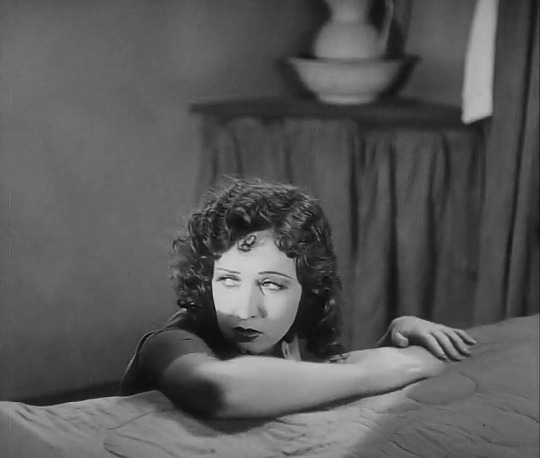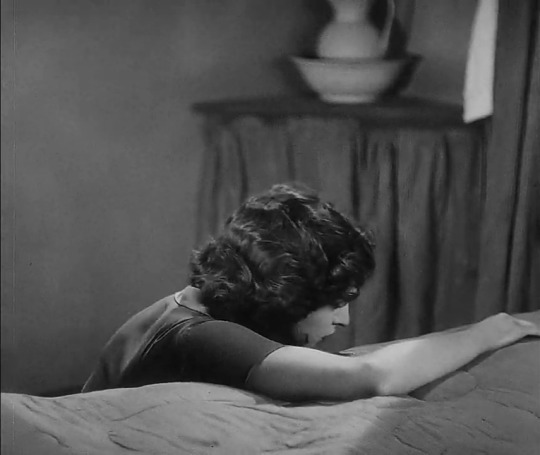#F.W.MURNAU
Explore tagged Tumblr posts
Text

Emil Jannings in The Last Laugh (F.W. Murnau, 1924)
Cast: Emil Jannings, Maly Delschaft, Max Hiller, Emilie Kurz, Hans Unterkircher, George John. Screenplay: Carl Mayer. Cinematography: Karl Freund. Production design: Edgar G. Ulmer. Film editing: Elfi Böttrich.
F.W. Murnau's landmark film The Last Laugh tells a simple story: An elderly, preening doorman (Emil Jannings) at a luxury hotel struggles to unload a large trunk one rainy evening, and the hotel manager (Hans Unterkircher) takes notice. The doorman goes home to his apartment building where he's greeted with the usual deference accorded to his regal bearing and his brass-buttoned uniform. But when he returns to work the next day he finds a new doorman wearing a copy of the uniform. The hotel manager tells him that he's been replaced, and to turn in the uniform and report to his new job: lavatory attendant. Appalled and crushed, he swipes his old uniform and goes home that night wearing it as if nothing has happened. His niece (Maly Delschaft) is being married. and the ex-doorman celebrates well into the night. Still tipsy the next day, he goes back to the hotel and his new job, stashing the uniform in a checkroom at the railroad station. He bumbles through his duties, but when he returns home he's mocked by his neighbors, who have discovered his fall from grace. The next day he's even more disenchanted with his new job, and incurs the anger of a patron who reports him to the hotel manager, who reprimands him. That night he stays in the washroom, where he's found by the night watchman (Georg John), who helps him retrieve the old uniform and return it to storage. Exhausted, he falls asleep in his chair, and the night watchman tenderly covers him with his coat. And that's where the one and only intertitle occurs: It proclaims that this is where the story would most likely end in reality, with the lavatory attendant living out the rest of his days with "little to look forward to but death." But instead, "The author took pity on him ... and provided quite an improbable epilogue." In short, the protagonist inherits a fortune and invites the night watchman to join him as they're wined and dined by the hotel. It's an audacious ending to a remarkably innovative film. The innovations have received most of the attention, especially Karl Freund's camerawork, which involved far more movement than was usual for the day, with Freund sometimes mounting the camera on a wheelchair or strapping it to his body and riding a bicycle through the sets. The doorman's drunkenness is simulated with a subjective camera, double-exposures, and focus changes. The absence of intertitles is also striking, with no loss of narrative coherence and only a little uncertainty about who some of the characters are: I wasn't sure about the identity of the bride until I saw her listed as his niece in the credits on IMDb. But it's the provision of an alternate ending that strikes me as most audacious. The English title, The Last Laugh, seems to derive from this "improbable epilogue." (The German title, Der letzte Mann, means "the last man.") Does the last laugh really belong to Murnau and scenarist Carl Mayer, mocking the audience's sentimentality in wanting an unearned happy ending?
1 note
·
View note
Text
Mary Duncan




City Girl (1930)
#mary duncan#city girl#dir: f.w.murnau#1930#gorgeous american actress#filmed entirely in oregon usa#cropped photos#b/w photography
495 notes
·
View notes
Text



FRIEDRICH WILHELM MURNAU (F.W.MURNAU) / BIRTHDAY (Bielefeld 28 December 1888 - Santa Barbara,California 1931)
Photo 1 : Murnau at the camera / 2 : Emil Jannings in "Der Letzte Mann" (The Last Laught) ,1924 / 3 : Max Schreck in "Nosferatu , Eine Symphonie des Grauens" (Nosferatu , a Symphony of Horror) ,1922.
0 notes
Text
Nosferatu: A Symphony of Horror (1922)

Nosferatu is now a hundred years old, which means a quick glance isn’t enough to fully appreciate its importance. Even without the historical context, there’s the brilliant cinematography, and a chilling performance by Max Schrek to keep you mesmerized.
In 1838, Thomas Hutter (Gustav von Wangenheim) is sent to Transylvania to visit Count Orlok (Schrek) by his employer, Knock (Alexander Granach). While settling the purchase of the house across from his, Thomas realizes the count is a vampire.
Nosferatu is a unique vampire film. It predates the most famous adaptation of Bram Stoker’s Dracula (whom this film is an unauthorized adaptation of). This makes it the only movie not influenced by Bela Lugosi’s iconic portrayal. We're used to seeing vampires as humans that survive by drinking blood. Orlok is a creature in his own category. The rat-like teeth, elongated fingers, bat-like ears, unearthly movements, and the way a plague always seems to accompany him say he isn't a man, that might never have been human... but what else could he be? It puts you on edge and Orlok seems to know this. He gleefully looks at anyone who walks within arm’s reach as food, delighting in the fact that no one has ever encountered a force like him before and that, should you be able to wrap your mind around the fact that he is the fabled “Bird of Death”, no one would ever believe you.
Before viewing the film, it's important to know that it was made before synchronizing sound was possible and way before any but the most basic cinematic techniques were invented. This preps you for the title cards, which linger on the screen for a long time (I guess people read a lot slower in 1922), and allows you to appreciate the technical and stylistic innovations. Tinting a scene blue to indicate nighttime and yellow to indicate daylight sounds basic, but would you have thought of doing so back in 1922 when color wasn’t even a thing in movies? How about using stop-motion to have Orlok manipulate his environment? There are little details here and there, like a note given to Knock by Count Orlok that shows a level of sophistication you wouldn’t expect out of some vampire movie made before the self-winding watch was invented. Every other time we see a document, the film cuts to a close-up so that the audience can read what it says, but look at those alchemical symbols. To the audiences of the past, it would’ve been a subtle and clever use of foreshadowing.
While I wouldn’t consider the film frightening, it is effective. The conclusion, in particular. I’m surprised we haven’t seen it done in any other vampire movie since. Like so many black-and-white fantasy films, it perfectly captures the feel of olden magic; the self-contained logic with the seemingly arbitrary but cut-and-dry rules that dictate how this creature who doesn’t belong fits in our realm, and how we (or in this case, Hutter’s wife Ellen, played by Greta Schröder) can fight back against this evil.
As is the tendency with these older films, the pace is a tad slow. Since you already know the basic rules of a vampire, you may find yourself a bit restless while waiting for Hutter to arrive at Orlok’s rotting castle. It’s something you get used to in time and you can’t blame director F.W. Murnau for being a little out of touch with 21st century standards. Nosferatu is a striking experience, a movie that’s unlike any other because of its age. It's creepy and a fascinating piece of history to watch. There’s a lot of great stuff here and to dismiss the film because it’s old, in black-and-white, silent, or foreign would be a grave mistake. Once you see Nosferatu, you’ll never forget it. (English version on Blu-ray, October 5, 2017)

#Nosferatu#nosferatu: a symphony of horror#movies#films#MovieReviews#FilmReviews#F.W.Murnau#HenrikGaleen#Dracula#vampiremovies#vampires#max schreck#GustavvonWangenheim#GretaSchroder#alexandergranach#RuthLandshoff#WolfgangHeinz#1922movies#1922films
6 notes
·
View notes
Photo








3 notes
·
View notes
Photo






The howl of the werewolf casts terror in every heart ….
Impressions from Nosferatu: A Symphony of Horror (silent movie by F.W.Murnau 1922)
Murnau’s colour code: night/blue, inside rooms by day/sepia, inside rooms by night/amber, dawn/pink
Striped Hyena … interesting casting choice for the ‘werewolf’ :)
June 2019
19 notes
·
View notes
Text
Nosferatu | Episode 328
New Post has been published on https://esonetwork.com/nosferatu/
Nosferatu | Episode 328

Author Dacre Stoker (Dracula, The Undead, Dracul, The Lost Journal Of Bram Stoker) joins Jim and Mark Maddox for a round-table discussion of the 1922 silent film horror classic “Nosferatu,” directed by F.W. Murnau and starring Max Schreck, Greta Schroder, Gustav von Wangenheim and Alexander Granach. Based on Bram Stoker’s classic novel, the story traces the arrival of Count Orlock in a small German village which results in several mysterious deaths. Find out more about this German Expressionist masterpiece on this episode of MONSTER ATTACK!, the podcast dedicated to old Monster Movies.
#1922 Silent Horror Classic#Bram Stoker#Dacre Stker#Dracula#F.W.Murnau#Jim Adams#Mark Maddox#Monster Attack!#Nosferatu
0 notes
Photo

http://www.cinealeman.com.ar/festival18/muda.html
#festival de cine alemán#der gang in die nacht#journey into the night#f.w.murnau#conrad veidt#olaf fønss#gudrun bruun-stephensen#carl mayer#harriet bloch#silent#buenos aires#moviegoers
3 notes
·
View notes
Photo

0 notes
Photo

O Último dos Homens
D, 1924
F.W.Murnau
4
1 note
·
View note
Photo

Margaret Livingston in
Sunrise : Α Song of Two Humans (F.W.Murnau,1927)
7 notes
·
View notes
Photo


1922 Nosferatu, eine Symphonie des Grauens (Nosferatu) de F.W.Murnau
0 notes
Photo









Nosferatu, a Symphony of Horror (F.W. Murnau, 1922)
#Nosferatu#Nosferatu a symphony of horror#Nosferatu eine Symphonie des Grauens#1922#Murnau#F.W. Murnau#F.W.Murnau#red#colour#final scene#vampire#vampires#death#Max Schreck#silent film
294 notes
·
View notes
Quote
Había el teatro (Griffith), la poesía (Murnau), la pintura (Rossellini), la danza (Eisenstein), la música (Renoir). Pero desde ahora hay el cine. Y el cine es Nicholas Ray.
0 notes

